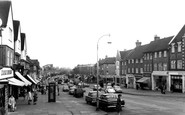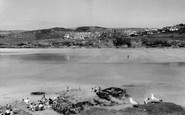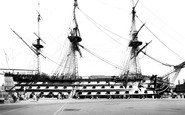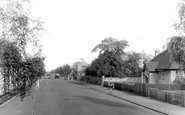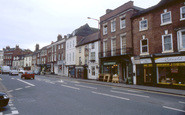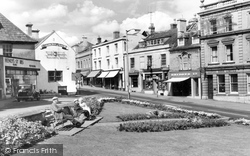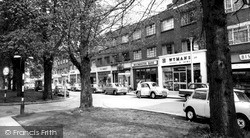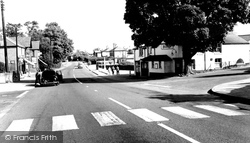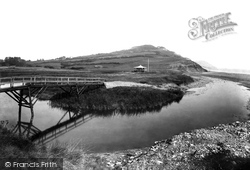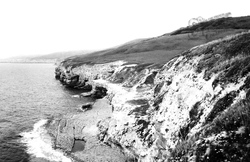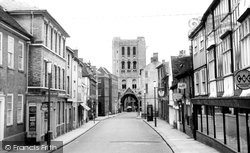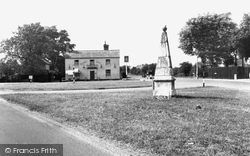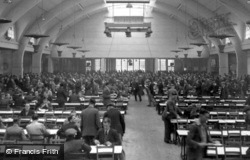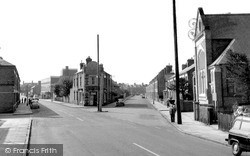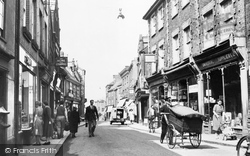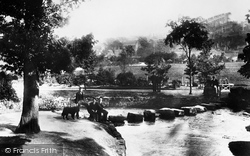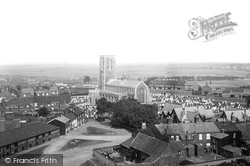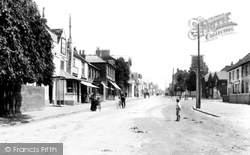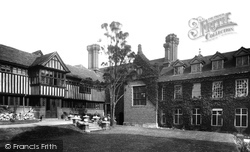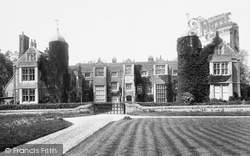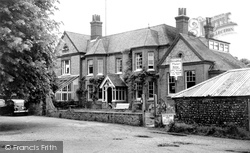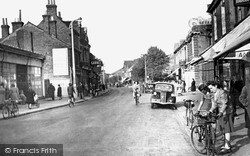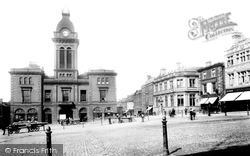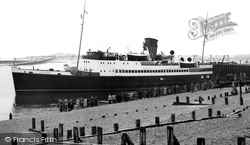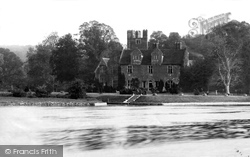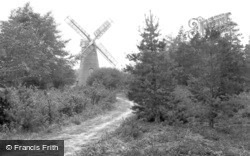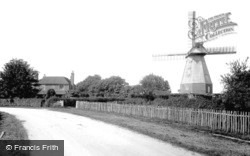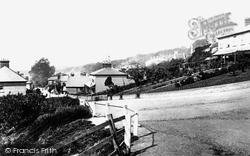Places
Sorry, no places were found that related to your search.
Photos
Sorry, no photos were found that related to your search.
Maps
Sorry, no maps were found that related to your search.
Books
Sorry, no books were found that related to your search.
Memories
741 memories found. Showing results 101 to 110.
My Apprentice Days With Northmet Electricity (Eeb)
I was born in Elmgrove Crescent Harrow in 1933 and lived in Pinner Road North Harrow, moving to Wealdstone in 1934. I started at Bridge Scool in 1938 and followed on to Belmont Sec. Modern School ...Read more
A memory of Kenton in 1948 by
Family Holidays
We had many happy family holidays at Polzeath. We always stayed in a bungalow above Tristram Cliff and could walk down across the fields to the beach. In the early days cars were not confined to the area at the top of the beach and ...Read more
A memory of Polzeath in 1960 by
The Convent
My father died the year after I was born and his employer Burton's, provided for myself and my three brothers to attend private schools, which is how I came from London to the Convent at the age of 4. I followed my brother Colin who ...Read more
A memory of Bridport in 1947 by
"Kiss Me, Hardy"
I've only been onboard the Victory once. It was enough to profoundly strike my imagination. I stood where Nelson fell ! It brings tears to my eyes to think of it now as I write. She is an incredible vessel. You can almost hear the ...Read more
A memory of Portsmouth in 1955 by
Little Sutton In 1950s And 1960s
What memories your comments conjure. How I loved the 'rec' as a child. We started on the 'baby swings' and progressed to the 'big swings' and see-saw and round-a-bout. The old shelter there was a favourite ...Read more
A memory of Little Sutton in 1960 by
Evacuee During World War 2
I was privately evacuated to Croxton Kerrial with my sister in 1940, we were billeted in a cottage named Woodbine Cottage, this was next to the Bakery. We attended the village school, I still remember some of the ...Read more
A memory of Croxton Kerrial in 1940 by
Newmarket Hospital
I worked in racing stables in Exeter Road. In the spring of 1960 I was injured when a yearling I was exercising suddenly reared and I 'went out the back door', narrowly missing the edge of the pavement, but hitting my ...Read more
A memory of Newmarket in 1960 by
Female Small Business Owner
Hello everyone, My great grandma was a business women in the transport industry back in the 1940’s. Unusual for a lady to have such a position back then. Her family name was Reilly, she had about 6 children one being a ...Read more
A memory of Glenboig by
Best Guinness In Town!
The little white building in the middle is the Lamb & Flag. I spent many a happy lunchtime & evening there in the '80's. It was a Marstons pub, run then by Don & Sheila Jones, an Irish couple who I think had been ...Read more
A memory of Worcester by
My Childhood In Wolverhampton 1946 1955
I played in the standing corn stooks behind our house, had my first pony/horse ride at Dixon's farm where my horse went berserk in a potato field, so I was put onto and stayed on a horse lead. I flew my ...Read more
A memory of Wolverhampton by
Captions
493 captions found. Showing results 241 to 264.
The Lloyds Bank building (right), originally a pair of attached houses, was built about 1870 before the decorative façade was added in two stages.
With the arrival of the Piccadilly Line came an influx of commuters, and with this influx came the promise of commercial profits.
While not obvious from this photograph, Gresford is most famous for the tragic mining disaster of 1934 when 266 lives were lost following an explosion and fire at the Gresford Colliery.
We are looking eastwards from the blocked mouth of the River Char, which ends its journey to the sea by having to break through a ridge of shingle (right).
Romantically named for the sea breaking across its rocks, Dancing Ledge is a mile south of Langton Matravers village.
On the right are the Edwardian buildings occupied by Marlow's from 1925 to 1975, Watson's Post Office and the Queens Head.
A few hundred yards along the present B1514 road past the turning to Pepys House, the road forks at the roundabout where the main road runs eastwards towards the A14 and the left road takes us
The canteen resembles a cave, but in its heyday there was far from savage fare to be had here! In the 1930s there were 3 lunch sittings, and it was routine to have 2 pints at the bar.
These red brick terraces were built to house the employees of hosiery and shoe manufacturers at the turn of the century.
Looking west along the High Street, we see buildings which are characteristic of North Norfolk: flints set in mortar, with brick facings.
This park was laid out for the benefit of working people to give them a break from the dust and grime of industrial Sheffield.
While many houses burned down in the fire of 1659, the 15th century church of St. Edmund survived because the churchyard served as a fire break.
Some time during the second half of the 19th century, Bracknell became a town, helped by the coming of the railway in 1856 and the development of market gardening and brick-making.
The Rush Cutters has a late 16th-century core, evident in the octagonal brick chimneys on the right and the massive stack behind the left hip. The houseboat is a real period piece.
This splendid red-brick Tudor house was once Chillington Manor, home of the Wyatts; one of the family, Sir Thomas the younger, led the rebellion against Queen Mary's marriage to Philip of
The red-brick Tudor manor house of Kentwell Hall stands at the northern end of Long Melford. Today it is best known for the striking Tudor Rose brickwork maze set into the courtyard.
This hotel near the sea front has brick walls with flint gables and garden walling. The tall chimney pots are all the same size. A flint walled outbuilding has a corrugated steel roof.
This bustling fifties shopping scene, with a substantial and surprising number of bicycles in evidence, shows the prominent red-brick Post Office on the left standing out against its rather dingy neighbouring
The Italianate, red brick Market Hall with its imposing clock tower was built in 1857, and still forms the centrepiece of the town's lively regular outdoor market.
The first 'King Orry' paddle steamer was built in 1842 by shipbuilders Aitken & Napier and sold in 1858. 'King Orry II', built by R Duncan & Company, was launched in 1871.
This splendid photograph shows Bisham Abbey overlooking a scenic stretch of the Thames.
Hurt Wood Mill is a small brick tower mill with four patent sails and a fantail. It is located on a remote hilltop surrounded by woodland. The mill has now been converted into a private house.
This is a Kentish white weatherboarded smock mill with a two-storey octagonal brick base, powered by four eliptic spring sails and winded by a fantail. It has now gone, and the site is built over.
Essex lacks natural rock so skills in the use of wood and brick-making have been well developed over the centuries.Attractive wrought iron fencing surrounds the long gardens on the right.
Places (0)
Photos (0)
Memories (741)
Books (0)
Maps (0)

